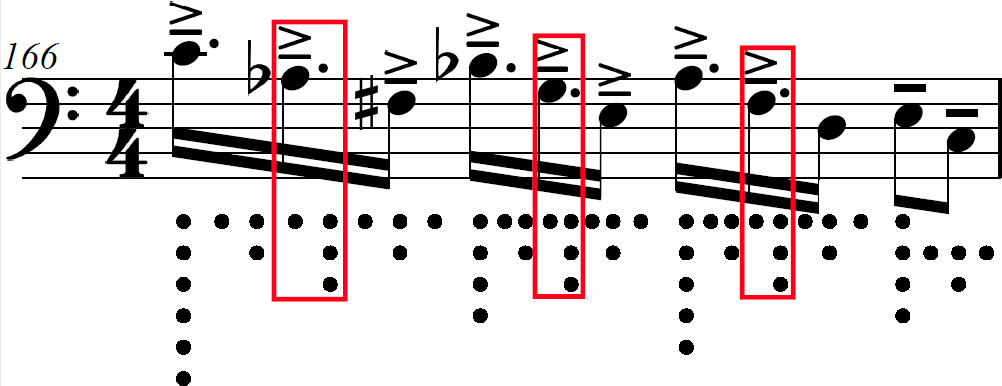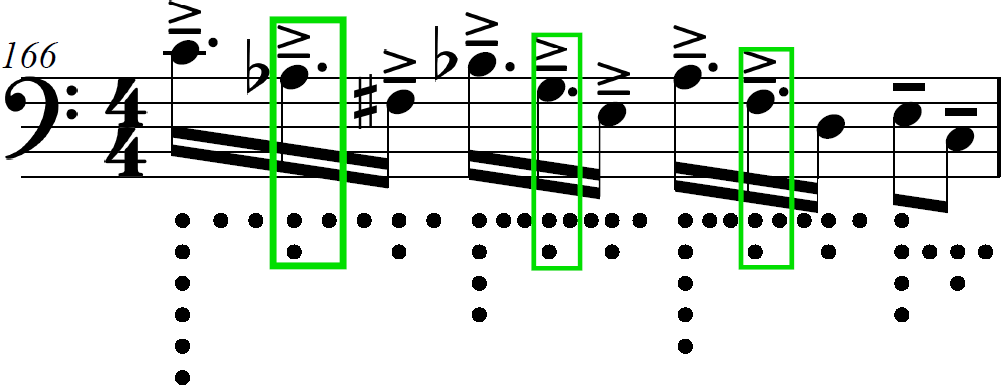Linguistic Stress and its Relationship to Phrasing: Rhythm and Metre in Lee Hyla’s Dream of Innocent III
Read as PDF
Bryan Hayslett
Bryan Hayslett received his Ph.D. from New York University’s Steinhardt School, where he is a member of the Adjunct Artist Faculty, teaching Cello and Music History. He also holds degrees from The Hartt School of Music and The Boston Conservatory. Founder and cellist of the contemporary performance group Juxtatonal, his solo programmes often feature premieres of new works written for him. Recent commissions include works by Joan La Barbara and Daniel Felsenfeld, while his published recordings include “A Special Light” (Innova), featuring music of David Macbride.
Bryan’s research centres on musical analysis and its relation to perception and performance, particularly applying linguistic theories to understand the articulation and apprehension of phrase and structure in contemporary music. He has presented his research at conferences across the United States and in Austria, Norway, and Portugal.
by Bryan Hayslett
Music & Practice, Volume 5
Repertoires & Styles
Active in New York City, Boston, and Chicago, Lee Hyla was known in particular for his chamber music and for his role as a member of the composition faculties at both New England Conservatory and Northwestern University. Despite his numerous commissions and influential teaching career, Hyla and his music have remained largely unstudied, discussed in only a few publications. As a cellist, I learned of his music when studying performance at Boston Conservatory; I was immediately drawn to its intensity and to the juxtaposition of aesthetics embodied in it.
Hyla’s unique approach to music comes from his influences. These range from classical composers Ludwig van Beethoven and Elliott Carter to funk musician James Brown, avant-garde rock artist Captain Beefheart (notably his 1969 album, Trout Mask Replica), singer/songwriter Neil Young and free jazz pianist Cecil Taylor. These artists were all outliers in their own genres who, among other traits in which this was manifested, approached phrasing and structure in highly individual ways. Hyla embraced their rhythmic intensity and strong gestures to synthesize his own unique approach to time.
This influence is most evident through direct comparison, and the following discussion pairs audio examples of Brown and Beefheart with excerpts of Hyla’s music. Brown’s 1969 song “The Popcorn” was one of Hyla’s favourites and contains features that are typical of Brown’s style: a steady pulse maintained by the drums, an active bass guitar and syncopated melodic instruments with pointed articulation that combine to create an energetic texture. The relationship of the rhythmic independence in the melody to the steady metrical pulse creates a driving tension, as heard in the opening of the song in Example 1. For comparison, Example 2 contains Hyla’s We Speak Etruscan for baritone saxophone and bass clarinet, which displays a similarly lively texture with energetic articulations and a feeling of syncopation within the rhythmic execution.
Example 1 Brown, “The Popcorn”[1]
Example 2 Hyla, We Speak Etruscan[2]
The next two examples juxtapose the music of Hyla with Beefheart’s Trout Mask Replica. In his Washington Post review, Tim Page classifies Trout Mask Replica as “one of the densest, strangest and most immediately off-putting records ever made”.[3] The album features speech-like vocals, non-aligned instrumental voices and words used for their sonic, rather than semantic, content. Beefheart’s music displays a loose rhythmic alignment that propels the music forward, as shown by “Frownland” in Ex. 3. The chaotic texture creates a large-scale sense of time that supports a vocal line resembling natural speech more than song. Hyla’s music shares with Beefheart’s this non-exact alignment and combination of seemingly disparate instrumental lines to create a texture that is still temporally organized. The introduction to Hyla’s String Quartet No. 4 in Example 4 mirrors the metrically loose beginning of “Frownland.”
Example 3 “Frownland,” Captain Beefheart, Trout Mask Replica[4]
Example 4 Hyla, String Quartet No. 4[5]
The complexity of Hyla’s notation obscures the way his music is imbued with the rhythmic feel of his influences, but there are underlying structures and patterns discernible that derive from a similar approach to time. Hyla uses dense, uneven, and irregular rhythms, written as combinations of various subdivisions of the notated metres, where simple metric and rhythmic notations would not communicate the specificity of rhythmic placement. His non-classical influences include performance traditions that rely on interpretive performative alterations to rhythm. An example is the concept of “swinging” in which consecutive quavers are performed unevenly, with the degree of unevenness depending on the context and the performer. Hyla specifically captures and notates such temporal alterations, organizing the notes so as to be free of an even metre but nevertheless implying a strictness of compositional control that is at odds with the freedom of “swing”.
The music of Brown, Beefheart, Young, and Taylor contains small gestures, or contiguous units of music that display energetic shaping through time. The term “gesture” has many definitions, but I use the word to refer to small groups of notes, heard in the music of these artists as “licks” or melodic fragments and as repeated ostinatos in the rhythm section. The shape of each gesture is understood according to the hierarchy of its constituents, and larger-level phrasing is perceived according to the relationship of gestures. My analytical framework illuminates structure through hierarchical organization according to perceptual salience. All music contains gesture, but the concept is particularly important when analysing and performing Hyla’s music because his non-classical influences use gesture differently than classical music does; structure is therefore definable more according to gesture than to standard phrase forms. Analysis of Hyla’s music benefits from a focus on perception rather than on the features traditionally highlighted by analysts of classical music.
This sense of gesture is central to analysing Hyla’s approach to phrasing and structure; his notation moulds every note in terms of its precise duration. In lieu of an even, perceptible metre, the music’s temporal structure relies upon the juxtaposition of gestures and on the relationship of each gesture to its neighbours. In Hyla’s music, some sections do have a steady, periodic beat, but my analytical framework shows temporal structure even in sections without a perceptible pulse. These passages with non-isochronous metre contain points of perceptual prominence that are not evenly spaced in time, a phenomenon which results from rubato, frequent notated metre changes and additive metres such as 2/4 + 1/8. The rhythms are often offset from the notated beats, further obscuring the underlying metre, even though events are notated within a metrical framework.
Because rhythm is a perceptual phenomenon which we also experience beyond the constructs of music, approaches to rhythm in other domains can aid the understanding of temporality in Hyla’s music, which operates outside the tonal tradition. The aural similarity between Hyla’s rhythms and speech rhythms led me to investigate the description of rhythm in linguistics, which focuses on word stress as the element of temporal organization in English. Stress operates differently in every language, so I investigated research about Hyla’s native language of English.
In order to understand and analyse temporal tension and phrasing in Hyla’s music, I have combined Bruce Hayes’s linguistic stress theory[6] with Fred Lerdahl and Ray Jackendoff’s generative theory of tonal music (GTTM)[7] to develop a rhythmically-based analytical framework. GTTM, published in 1983, described the perception of heard structures through the use of Noam Chomsky’s generative linguistic theory; it employs wellformedness rules and preference rules to guide analyses that reflect the heard structure. However, GTTM relies on periodic metre, so, in order to analyse meaningfully Hyla’s music, the theory must be extended beyond the assumptions of periodic metre and traditional beat hierarchy. Because linguistic stress theory suggests stress in language manifests as linguistic rhythm and operates hierarchically without a periodic framework, the theory can assist in analysing music without a constant, evenly-spaced beat.
Studies have shown a relationship between the rhythm of a composer’s language and that of their music by comparing the durational variability of each.[8] For instance, a sequence of crotchets with one quaver will have very little durational variability as compared to a combination of notes all of different durational values. Languages are classified as being organized rhythmically around either stress or syllables. Stress-timed languages, such as English, German, Norwegian, Russian, and Arabic, are organized around stresses, meaning that syllables vary greatly in length. For example, each word in the sentence “dogs chase cats” includes a perceptual focus that persists even when expanding the sentence with more words, such as “the dogs are chasing the cats”; the added words are spoken with much shorter syllables. Syllable-timed languages, such as French, Italian, Finnish, and Turkish are spoken with each syllable lasting roughly the same amount of time. The syllable rhythms can be measured with the normalized pairwise variability index (nPVI), which measures durational variability.
English speech has a higher durational variability than French, which makes sense given that English is stress-timed and French is syllable-timed. However, this relationship was similarly reflected in the comparison between English and French music through the work of Aniruddh Patel and Joseph Daniele.[9] They used the Barlow and Morgenstern Dictionary of Musical Themes for source material, including all composers who were born in the 1800’s and died in the 1900’s and who were native speakers of British English or French living and working in their home country. The authors also excluded music that used words or purposefully reflected a cultural style. Example 5 shows the results of their experiment, in which French speech and music display a lower durational variability than English speech and music.

Example 5 Proportional relationship of English and French speech and music [10]
Example 6 Ira Glass speaking
Example 7 Hyla, Amnesia Redux[11]
This speech-like quality of rhythm is often disguised by pitch and harmony, so I have reduced the examples to rhythm alone. Each tick represents a syllable or the inception of a note, with Ira Glass’s speech in Example 8 and Hyla’s music in Example 9.
Example 8 Ira Glass speaking as rhythm[12]
Example 9 Hyla, Amnesia Redux excerpt as rhythm
These speech-like qualities further inspired me to explore how linguistic theories could augment or expand GTTM. Employing another linguistic theory to describe the way emphasis operates in post-tonal music also aligns with GTTM’s origins. Hyla used his voice when composing, as shown in my research conducted in Hyla’s archive in Chicago. I found several cassette tapes he used while composing that contain audio of him working out his music by singing and scatting while playing the piano. He would record himself playing the piano and sometimes vocalizing, and then he would record himself a second time playing and vocalizing over the first recording.
To show how stress theory operates, Example 10 shows an analysis selected from Bruce Hayes’s book. Metrical stress theory assigns stress according to lexical rules, grammar, and sentence structure. Each syllable receives a dot or X, with the X’s representing relative levels of stress, and groups are enclosed within parentheses at each hierarchical level. This analysis describes the heard structure.

Example 10 Example of Hayes’s stress theory[13]
Characteristic features of Hyla’s temporal approach evident in this example are: additive time signatures, time signature changes between almost every measure, a tempo range, and a notated metrical disruption. These details show the temporal complexity of Hyla’s music and exhibit some of the issues inspiring my analysis. Groups contain varying subdivisions of the notated beat, but the grouping boundaries are still clear according to GTTM’s rules despite the fact that the metre changes between every measure.
The different time signatures throughout Example 11 show that the delineating symmetrical gestures would not match the musical surface and exhibit parallelism as a more important analytical condition than symmetry. For example, mm. 159, 160, and 163 all contain an upward line beginning from a low C; despite the slight alterations between each of the gestures, they are heard as being parallel. Rests clearly separate most of the gestures at the smallest level. The grouping boundary into the final measure is delineated by a change to a new rhythmic pattern with an upward melodic jump from a downward contour. Hyla’s specificity of notation reveals his compositional precision, and the resulting construction of each measure as a group at different levels shows how Hyla tailored the notation to reinforce the organization of the musical surface.
Metrical structure refers to the pattern of strong and weak beats inferred by the listener, which is not always periodic or isochronous in Hyla’s music. Primarily, the tactus and the immediately larger levels do not always consist of evenly spaced beats, and Hyla frequently mixes time signatures that cannot be divided in parallel ways. This hierarchy is essential to the heard structure and operates differently in Hyla’s music than in tonal music, which is why I focus on perceptual rather than metrical salience.
Several of GTTM’s metrical preference rules are irrelevant or conflict with the musical surface. Most notably, cadences and suspensions operate differently and will therefore not be involved in the heard structure, as they are in GTTM. The beginning of Example 11 displayed one of the main issues with trying to analyse the metrical structure without a repeating metre. Example 12 shows the instability of assigning a traditional metrical structure to the measures immediately preceding it – mm. 155-159 of DOI3. The dots represent the crotchet level and higher. The differing time signatures of these measures make symmetry impossible at higher levels. The downbeat of m. 157 would be expected to receive the larger metrical beat, but a description favouring parallelism of the previous measures displaces the larger level beat from the downbeat to the middle of the bar where it consequently aligns with the highest pitch in that group. Attempting to assign metrical structure to this excerpt requires a revision of the basic assumptions of the structure.
Next, rhythms that are offset from the beat prioritize the preference for a heard structure in which strong beats coincide with the inception of pitch-events rather than notated metrical beats. These rhythms reflect the tension between rhythm and metre in Hyla’s non-classical influences, although Hyla uses this concept outside of an even pulse. My analysis favours the perceptual salience of the inception of the pitch event because the music does not contain a steady pulse to set expectations for the placement of future beats; the listener will not entrain to a metre, so the attention will be drawn to the inception despite the offbeat placement. Example 13 shows a repeated figure with offset dotted semiquavers in m.166. Symmetry in GTTM would consider the accented events as beats at the level of the demi-semiquavers, with the empty space receiving the larger quaver beat. However, an alternative analysis in Example 14 that eliminates the quaver level in the measure more accurately addresses the structure by showing the salience of the inception of pitch events, although this produces an ill-formed structure according to GTTM. Addressing this issue at larger levels with more easily perceived subdivisions is important in the development of my framework, which prioritizes perceptual markers in lieu of entrainment to a periodic metre.
To address such issues, I employ Hayes’s stress theory. The primary perceptual markers of linguistic stress are pitch contour, duration, and loudness – aspects that can be organized hierarchically within music. Specific characteristics of these qualities do not invariably signal stress; for example, both low and high pitch can receive greater stress depending on the context. The perceptual indicators of stress in language lead to a few basic rules: stress aligns with the relatively highest or lowest pitch, with relatively longer notes, and with relatively louder notes but not very strongly. Hayes writes that stress “unifies in a coherent way a broad set of phenomena,”[14] and my analytical framework distils the above factors into a unified presentation from the bottom up. Example 15 contains an example analysis of mm. 159-162. The prominence of this group is encompassed in a single tree, with each line indicating the prominent notes. The height of the lines corresponds to the hierarchical level of prominence, so the tallest line indicates the most prominent event. The first two prominent notes are the cello’s lowest pitch, the open C string, at the bottom of the pitch contour of this excerpt; they also have longer durations than the surrounding notes. The accent and pitch height suggest prominence on the downbeat of m. 161, but the high D in m. 162 is prominent at a higher level. The final B receives prominence because of pitch contour.
As I have shown, my analytical framework is based on the combination of GTTM and metrical stress theory from linguistics to describe temporal structure. In examining Hyla’s music through the lens of stress and emphasis, my framework provides an outline of phrasing and structure revealing how gesture forms the basis of Hyla’s approach to time. Further exploration would apply my framework to other repertoire to examine how it reveals meaningful information about temporal structure and phrasing outside of Hyla’s music.
Bibliography
Brown, James, The Popcorn (King, 1055, 1969)
Daniele, Joseph, and Aniruddh Patel, ‘An Empirical Study of Historical Patterns in Musical Rhythm: Analysis of German & Italian Classical Music Using the nPVI Equation’, Music Perception, 31 no. 1 (2013), 10-18
Hayes, Bruce, Metrical Stress Theory (Chicago: University of Chicago Press, 1995)
Huron, David, and Joy Ollen, ‘Agogic Contrast in French and English Themes: Further Support for Patel and Daniele (2003)’, Music Perception, 21 no. 2 (2003), 267-271
Hyla, Lee, Lee Hyla: We Speak Etruscan, Speculum Musicae (New World Records, 80491-2, 1996)
——, Lee Hyla: Wilson’s Ivory-Bill, Lydian String Quartet (Tzadik, 8027, 2006)
——, Lee Hyla: Wilson’s Ivory-Bill, Triple Helix (Tzadik, 8027, 2006)
Lerdahl, Fred, and Ray Jackendoff, A Generative Theory of Tonal Music (Cambridge MA: MIT Press, 1983)
Page, Tim, ‘O Captain! Beefheart’s Enduring Offbeat Legacy’, The Washington Post, 12 December 1999, p. G01
Patel, Aniruddh, and Joseph Daniele, ‘An Empirical Comparison of Rhythm in Language and Music’, Cognition, 87 (2003), B35–B45
——, ‘Stress-Timed vs. Syllable-Timed Music? A Comment on Huron and Ollen (2003)’, Music Perception, 21 no. 2 (2003), 273-276
Vliet, Don Van, Trout Mask Replica, Captain Beefheart and his Magic Band (Straight, STS 1053, 1969)
Endnotes
[1] James Brown, The Popcorn (King, 1055, 1969).
[2] Lee Hyla, Lee Hyla: We Speak Etruscan, Speculum Musicae (New World Records, 80491-2, 1996).
[3] Tim Page, ‘O Captain! Beefheart’s Enduring Offbeat Legacy’, The Washington Post, 12 December 1999, p. G01.
[4] Don Van Vliet, Trout Mask Replica, Captain Beefheart and his Magic Band (Straight, STS 1053, 1969).
[5] Lee Hyla, Lee Hyla: Wilson’s Ivory-Bill, Lydian String Quartet (Tzadik, 8027, 2006).
[6] Bruce Hayes, Metrical Stress Theory (Chicago: University of Chicago Press, 1995).
[7] Fred Lerdahl and Ray Jackendoff, A Generative Theory of Tonal Music (Cambridge, MA: MIT Press, 1983).
[8] Aniruddh Patel and Joseph Daniele, ‘An Empirical Comparison of Rhythm in Language and Music’, Cognition, 87 (2003), B35–B45; David Huron and Joy Ollen, ‘Agogic Contrast in French and English Themes: Further Support for Patel and Daniele (2003)’, Music Perception, 21 no. 2 (2003), 267-271; Aniruddh Patel and Joseph Daniele, ‘Stress-Timed vs. Syllable-Timed Music? A Comment on Huron and Ollen (2003)’, Music Perception, 21 no. 2 (2003), 273-276; Joseph Daniele and Aniruddh Patel, ‘An Empirical Study of Historical Patterns in Musical Rhythm: Analysis of German & Italian Classical Music Using the nPVI Equation’, Music Perception, 31 no. 1 (2013), 10-18.
[9] Patel and Daniele, ‘An Empirical Comparison of Rhythm in Language and Music’.
[10] Patel and Daniele, ‘An Empirical Comparison of Rhythm in Language and Music’, pp. B38 and B41.
[11] Lee Hyla, Lee Hyla: Wilson’s Ivory-Bill, Triple Helix (Tzadik, 8027, 2006).
[12] I created Ex. 8 and Ex. 9 manually using Garageband.
[13] Hayes, p. 369.
[14] Hayes, p. 9.
DOI: 10.32063/0504






